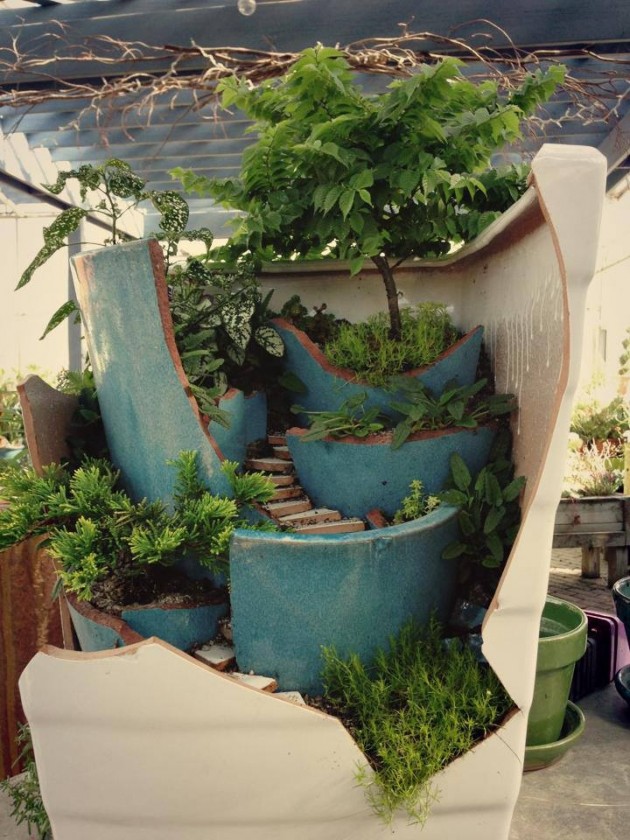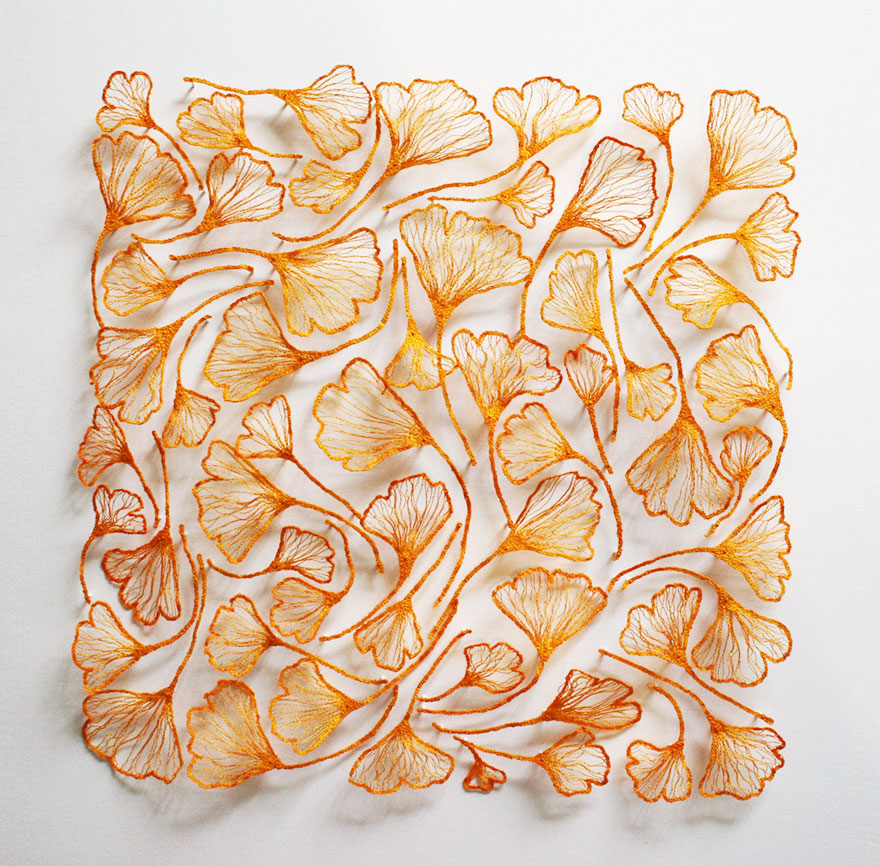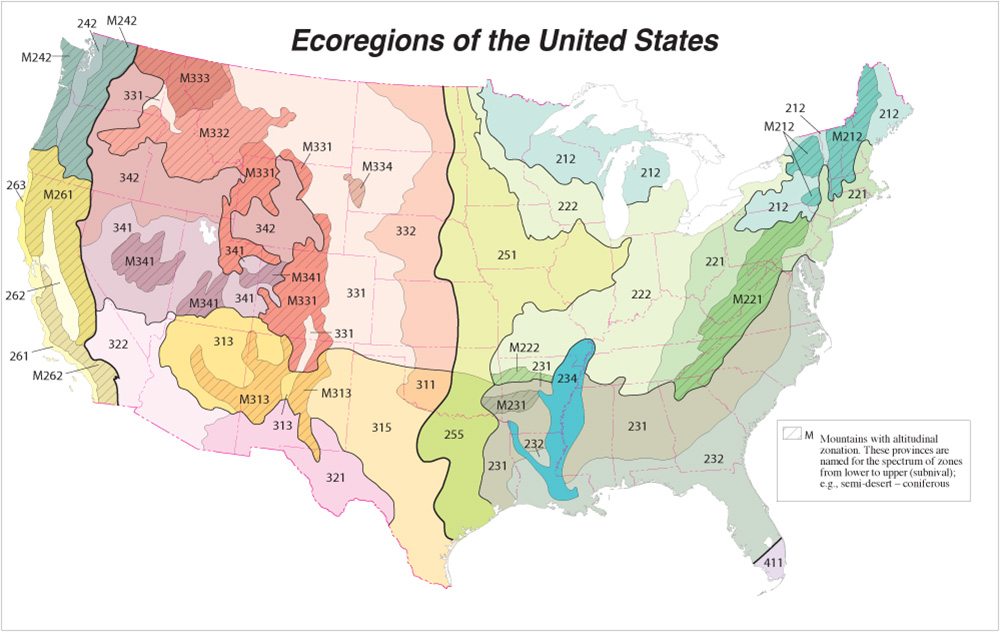
Let's have a love affair with planet earth and all of it's inhabitants. Then we would never poison it with chemical fertilizers, pesticides or fracking solutions. It can be healthy using natural means. Blessings to you and all.
Total Pageviews
Tuesday, March 31, 2015
Monday, March 30, 2015
Sunday, March 29, 2015
Make a Bee Watering Station
Make A Bee Waterer And Help Hydrate Our Pollinators
Posted in Nature By Aaron Jackson On June 24, 2014
A single bee tends to at least 2,000 flowers daily, with their tiny wings beating 10,000 times per minute, carrying pollen, and dramatically assisting our food supply. All that work makes the bees thirsty, especially on a hot day.
 Bees need access to safe water sources, they often risk drowning in birdbaths or being eaten at rivers and lakes among birds, fish, frogs and other wildlife. This is why they often fly around our clothes lines and may even land on us if we are in an outdoor pool on a hot day.
Bees need access to safe water sources, they often risk drowning in birdbaths or being eaten at rivers and lakes among birds, fish, frogs and other wildlife. This is why they often fly around our clothes lines and may even land on us if we are in an outdoor pool on a hot day.
Kim Flottum, editor of the Bee Culture magazine, writes in her book The Backyard Beekeeper: An Absolute Beginner’s Guide to Keeping Bees in Your Yard and Garden: “Water is used to dissolve crystallized honey, to dilute honey when producing larval food, for evaporation cooling during warm weather, and for a cool drink on a hot day.”
“Bees know exactly where to return for the same water source. Foragers seem to seek water sources that are scented,” Flottum says.
One solution to this problem is to add marbles or pebbles to a bowl or pan and then add water. The marbles give the bees a spot to land so they don’t drown when they come to drink.
Read more: http://www.intelligentliving.co/make-bee-waterer-help-hydrate-pollinators/#ixzz3VpkFwqjm
Saturday, March 28, 2015
Friday, March 27, 2015
Thursday, March 26, 2015
Wednesday, March 25, 2015
Free Range Child
This is a deep and thoughtful article about our current road to extinction and the hope that the next generation might bring if we help prepare our world for it.
http://overgrowthesystem.com/wChy-were-having-a-kid-a-farmers-thoughtsor-free-range-child/
http://overgrowthesystem.com/wChy-were-having-a-kid-a-farmers-thoughtsor-free-range-child/
Tuesday, March 24, 2015
Syrian Seedbank
Syrian seedbank wins award for continuing work despite
civil war
Thursday 19 March 2015 10.14 EDT Last modified on Tuesday 24 March 201507.01 EDT
Syrian
scientists who risked their lives preserving the region’s ancient farming
heritage with nearly 150,000 seed samples are presented Gregor Mendel award in
Berlin.
The fields around Aleppo have sustained
humanity for tens of thousands of years. Blood-torn now, they were among the
first to produce wheat, barley and the crops that made this area part of the
“fertile crescent” that Western civilization sprang from.
There may be little sign of that left today,
amid Syria’s bloody civil war, but the few remaining strands of the region’s
farming heritage have been pulled together by a small group of scientists,
whose achievement has just been recognised.
The Gregor Mendel award was presented on
Thursday to the scientists of Syria’s Icarda genebank at a ceremony in Berlin, for their achievement in preserving
nearly 150,000 seed samples. Most of the samples will be held in safety at a special facility in Svalbard,
in the far north of Norway, built for banking seeds in optimum conditions.
Icarda’s
genebank team in Aleppo. Thanks to their efforts, almost 100% of the collection
is safely duplicated outside Syria and 80% in Svalbard, Norway.
Mahmoud Solh, director general of Icarda, said
the bank represented the “genetic wealth” of humanity, with plants from some
128 countries. “The role of gene collection in preserving crop biodiversity and
ensuring future food supply has become particularly important as climate change
poses a serious threat to crops and food security in the developing world,” he
said.
The scientists who have risked their lives in
the midst of civil war in Syria to save a global good for humanity are part of
a millenia-old culture. Syria was
part of what we now know as the “fertile crescent” in the Middle East, where humanity
first learned agriculture, revolutionising life by taking our ancestors from a
hunting and gathering existence to a settled mode of farming that eventually
led to modern civilisation.
The products of the agricultural revolution of
10,000 years ago are still in use today, but their origins are under threat.
New diseases, such as the devastating wheat stem rust, which was virtually
unknown a decade ago but could now threaten bread supplies across swathes of
the Middle East and Africa, are spreading, fuelled by the globalisation of
agriculture and the increasing focus on a smaller number of high-yielding crop
varieties.
Seeds of the crops that have sustained us for
millennia – of wheat, rice, maize and beans – are vital to modern science,
because of the genetic traits that they contain, and they could prove essential
to countering emerging diseases and to improving crop yields to feed the
anticipated 10 billion people who will soon be sharing the planet.
The genes that our ancestors so valued as to
spend generations breeding them into viable staple crops are preserved in the
crop varieties we have today. But as global “agribusiness” focuses on an
increasingly narrow range of varieties, preferring “monoculture” as more
efficient, the genetic pool becomes more shallow. Older, less apparently
valuable, varieties are given up, and with them the useful genes they might
contain, in order to maximise a few key qualities.
But the danger is that as farmers “breed in”
genes that appear desirable, they also “breed out” variants that could hold the
key to other genetic traits whose worth is still unknown, or undervalued. When
new diseases break out – as they have done – these older varieties could become
the saviour, and that is why a small but dedicated cadre of scientists around
the world have been fighting – and sometimes risking their lives – to preserve
this overlooked genetic inheritance.
Monday, March 23, 2015
Sunday, March 22, 2015
Saturday, March 21, 2015
Friday, March 20, 2015
Thursday, March 19, 2015
Artist Miguel Chevalier:
Artist Miguel Chevalier:

Check out the videos that these pictures were taken from.
http://streamingmuseum.org/miguel-chevalier-at-utsikten-kunstsenter-norway/
Wednesday, March 18, 2015
Tuesday, March 17, 2015
Group Names for Birds
A bevy of quail
A bouquet of pheasants [when flushed]
A brood of hens
A building of rooks
A cast of hawks [or falcons]
A charm of finches
A colony of penguins
A company of parrots
A congregation of plovers
A cover of coots
A covey of partridges [or grouse or ptarmigans]
A deceit of lapwings
A descent of woodpeckers
A dissimulation of birds
A dole of doves
An exaltation of larks
A fall of woodcocks
A flight of swallows [or doves, goshawks, or cormorants]
A gaggle of geese [wild or domesticated]
A host of sparrows
A kettle of hawks [riding a thermal]
A murmuration of starlings
A murder of crows
A muster of storks
A nye of pheasants [on the ground]
An ostentation of peacocks
A paddling of ducks [on the water]
A parliament of owls
A party of jays
A peep of chickens
A pitying of turtledoves
A raft of ducks
A rafter of turkeys
A siege of herons
A skein of geese [in flight]
A sord of mallards
A spring of teal
A tidings of magpies
A trip of dotterel
An unkindness of ravens
A watch of nightingales
A wedge of swans [or geese, flying in a "V"]
A wisp of snipe
Sunday, March 15, 2015
Saturday, March 14, 2015
Thursday, March 12, 2015
Wednesday, March 11, 2015
THE STORY OF JOHNNY APPLESEED - OLD TIME RADIO CLASSIC PRODUCTION
This is very entertaining on so many levels.
Buds are Leafing
Spring is so amazing. I'm new to Northern California (from So. Cal.) and so I was thrilled to see my first pair of brilliant blue birds scouting out my yard for insects! There were yellow finches and now there are a pair of doves sitting on the edge of the trampoline. This morning I realized that little leaves have opened all over some of the naked trees. I have really loved seeing the winding branches of the naked trees and have some regret that they will be camouflaged again with leaves, and yet . . . the greening should be a beautiful sight to witness as well.
Tuesday, March 10, 2015
Subscribe to:
Posts (Atom)


















.jpg)



























